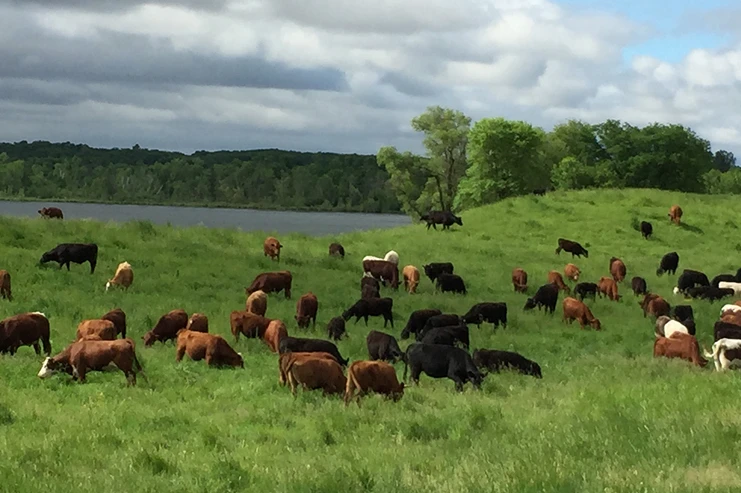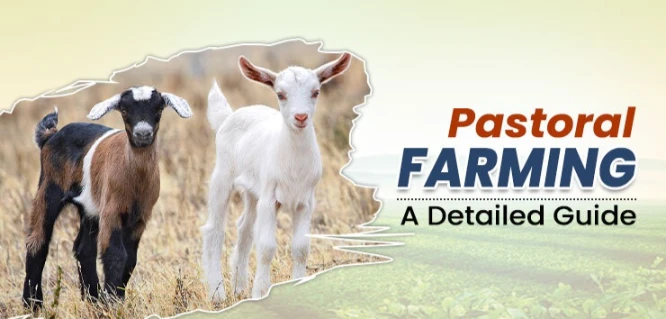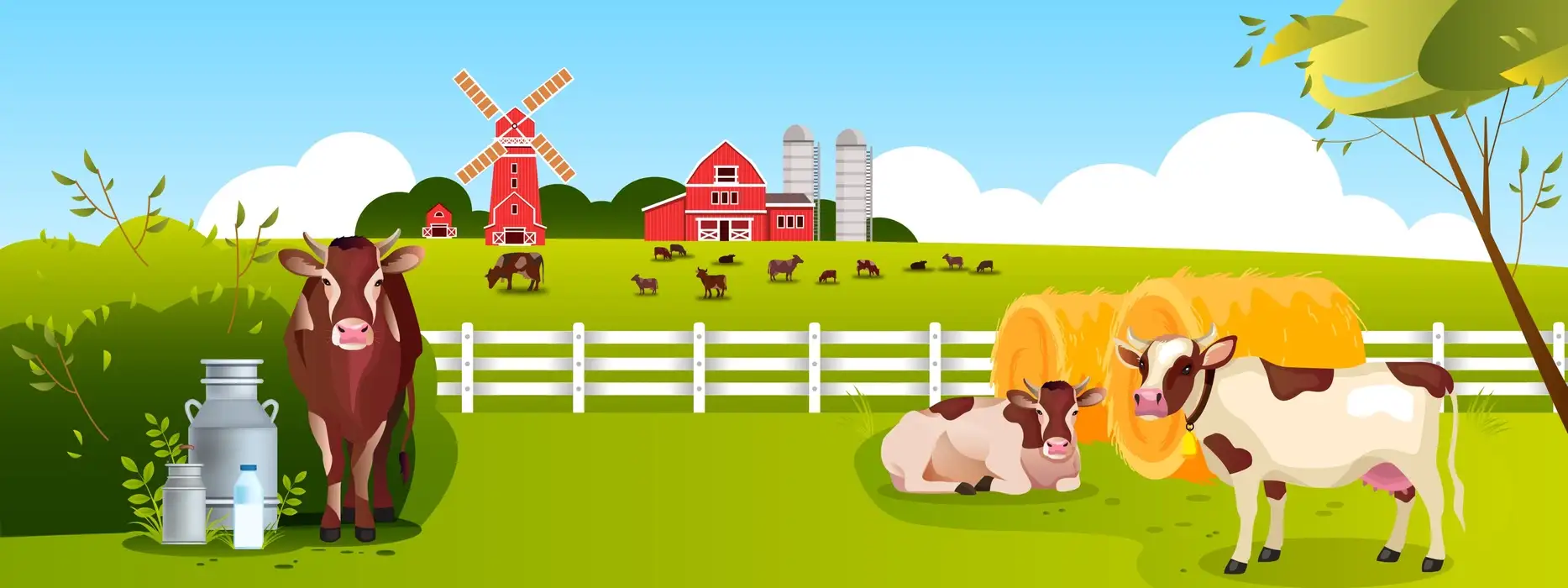Regenerative Cattle Farming, is not a new concept, but it has gained more attention in recent years as a potential solution to some of the biggest challenges facing our planet, such as climate change, food insecurity, and biodiversity loss.
And how can you adopt regenerative practices on your ranch without sacrificing your profitability and productivity?
In this blog post, we will answer these questions and show you how regenerative cattle farming can benefit both the planet and your wallet.

Regenerative Cattle Farming
It is a way of raising cattle that mimics the natural behavior of wild ruminants, such as bison, that coexisted with and complemented the grasslands for millions of years.
It involves managing cattle in a way that enhances the soil health, the plant diversity, the water cycle, and the carbon cycle.
The key to this type of farming is rotational grazing, a method of moving cattle from one paddock to another on a regular basis, sometimes twice a day.
This allows the cattle to graze the grass in a short-duration, high-intensity manner, similar to how bison grazed the prairies. By doing so, the cattle:
- Stimulate the growth of new grass shoots and increase the biomass and diversity of the plants.
- Trample the residual forage and manure into the ground, creating a natural mulch that protects the soil from erosion and evaporation.
- Recycle the nutrients and organic matter into the soil, improving the soil fertility and structure.
- Sequester carbon dioxide from the atmosphere into the soil, reducing greenhouse gas emissions and mitigating climate change.
After grazing, each paddock is given a long rest period, usually several weeks or months, depending on the season and the climate. This allows the plants to recover and regenerate, creating a resilient and productive ecosystem.
Benefits Of Regenerative Cattle Farming
It has many benefits for the environment, the animals, and the farmers. Here are some of the main advantages:
Environmental Benefits
It can help restore degraded lands, conserve water resources, increase biodiversity, and fight climate change.
According to a study by the Savory Institute, a global network of regenerative farmers, regenerative grazing can sequester up to 3.4 tons of carbon per hectare per year, which is equivalent to removing 7.5 tons of carbon dioxide from the atmosphere.
And can also reduce the need for external inputs, such as fertilizers, pesticides, and antibiotics, which can pollute the environment and harm human health.
Animal Welfare Benefits
This type of farming can improve the welfare and health of the cattle, as they are allowed to express their natural behavior and instincts.
It can also reduce the stress and disease of the cattle, as they are exposed to a diverse and nutritious diet, a clean and comfortable environment, and a low-stress handling system.
And can also improve the quality and safety of the meat, as it can increase the omega-3 fatty acids, anti oxidants, and vitamins in the beef.
Economic Benefits
It can increase the profitability and resilience of the ranchers, as they can reduce their costs, diversify their income, and adapt to changing conditions.
And can reduce the costs of feed, fertilizer, fuel, machinery, and veterinary care, as the cattle and the land provide most of the inputs needed.
It can also diversify the income of the ranchers, as they can sell not only beef, but also other products and services, such as carbon credits, ecotourism, wildlife habitat, and education.
And can also help the ranchers cope with droughts, floods, pests, and market fluctuations, as they have a more resilient and flexible system.

Started With Regenerative Cattle Farming
If you are interested, you may wonder how to get started and what steps to take. Here are some tips and resources to help you:
Learn From Other Regenerative Ranchers
One of the best ways to learn is, to visit or contact other ranchers who are already practicing it. You can ask them about their challenges, successes, and lessons learned, and get some practical advice and inspiration.
Connect with regenerative ranching communities like Savory Institute and Country Natural Beef for educational resources, workshops, and consulting.
Start Small And Experiment
You don’t have to change your whole ranch overnight. Start with a small area or a small herd and experiment with different grazing methods, paddock sizes, and rest periods.
Monitor and measure the changes in the soil, the plants, the water, and the cattle, and adjust your management accordingly. You can also compare the results with your conventional practices and see the difference for yourself.
Seek Support And Collaboration
You don’t have to do it alone. Seek collaboration from family, neighbors, customers, suppliers, extension agents, and policymakers. Share your vision and goals, inviting them to join your journey.
Seek support from programs like USDA’s NRCS, EQIP, and CSP for financial and technical assistance.

Conclusion
Regenerative cattle farming is a way of raising cattle that can improve the health of the soil, the environment, and the people.
Boosting ranchers’ profits and resilience, it cuts costs, diversifies income, and adapts to changing conditions.
It is not a one-size-fits-all solution, but a journey of learning and adapting to the unique context and needs of each ranch. It can be a win-win-win situation for the planet, the cattle, and the ranchers.
Read More:
Ore Farming Palworld: A Beginner’s Guide
Farming Fixing And Fabricating: Save Money, For Your Better Life
O Farming Investing: Online Platform, Higher Returns & Low Risks
O Farming Oil: A New Trend In Online Brokerage & Benefits
Mixed Crop And Livestock Farming: Different Ways, Benefits & Challenges
What Is O Farming: Make Money Online, Get Start & Benefits

Meet Our Expert Agricultural Administrator
Welcome to agrigreenhands.com, your dedicated hub for all things related to agricultural farming. Leading the way in our commitment to sustainable and innovative practices is Jawad Hussain, our esteemed administrator with a profound background in agriculture….


